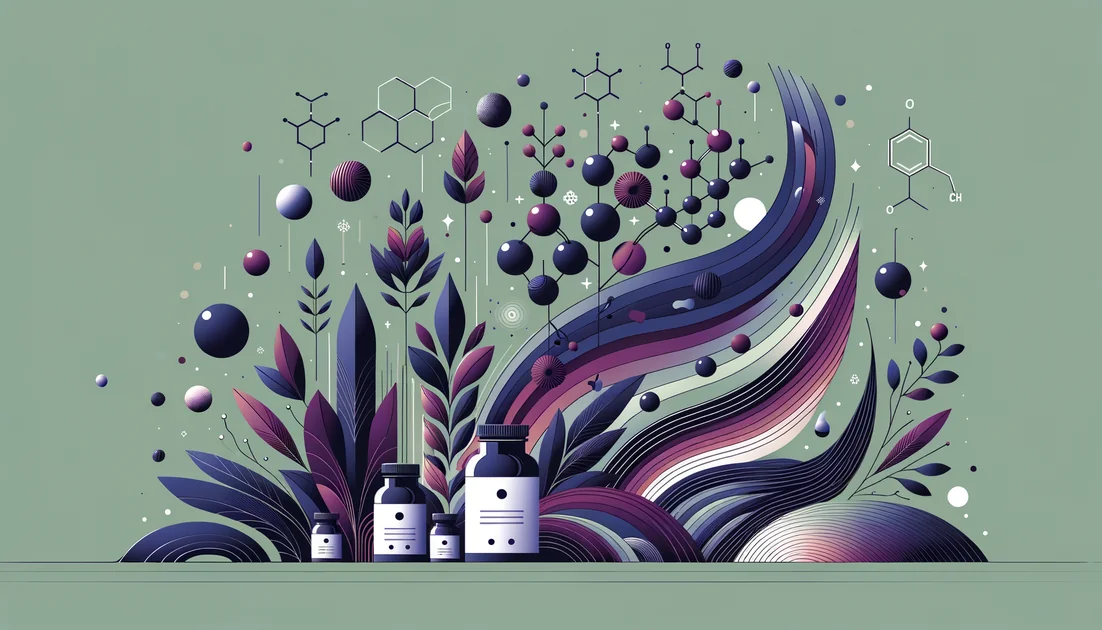
Muscle Insurance: How a leucine spark called HMB protects idle muscle—and divides the weight room
You don't lose muscle in the gym; you lose it when life forces you to be still. Ten days in a hospital bed can peel away strength you spent years building. Scientists went looking for a nutritional "brace" that could hold muscle together during those quiet catastrophes—and found an unlikely candidate hiding in a corner of leucine's metabolism.
- Evidence
- Promising
- Immediate Effect
- No → 4-12 weeks
- Wears Off
- Likely within weeks after stopping if training/nutrition aren't maintained
A molecule with a backstory
In 1996, an Iowa State team led by Steven Nissen reported that a sliver of leucine's metabolism—β-hydroxy-β-methylbutyrate, or HMB—helped novice lifters lift a little more and leak a little less muscle protein during training. Think of leucine as the raw lumber and HMB as one rare hardwood plank: the body makes only a little of it on its own, which is why supplementing 3 grams became the research norm. [1] The International Society of Sports Nutrition later summarized the early arc plainly: "HMB can be used to enhance recovery by attenuating exercise-induced skeletal muscle damage," and it seems most helpful when started two weeks before hard training. [2]
When motion stops, HMB steps in
The most striking clues about HMB didn't come from bodybuilders but from bed rest. In a randomized trial, healthy older adults did 10 days of complete bed rest—a scenario that usually strips about two kilos of muscle. Those given 3 g/day of calcium HMB largely held their lean mass; placebo subjects did not. It was as if HMB stitched torn fabric while inactivity tried to pull it apart. [3] Follow-up work peered inside muscle: bed rest dimmed the cellular "powerhouse settings" and cranked up stress signals, but an oral nutrition shake containing HMB blunted some of those harmful gene shifts. The engine still slowed, yet HMB seemed to keep the wiring from fraying. [4]
The athlete's paradox
So is HMB a quiet hero for everyone? Not exactly. Meta-analyses in older adults generally point to small but real gains in fat-free mass with HMB—especially when nutrition is marginal or activity is low. [5] But in young, resistance-trained lifters, a rigorous meta-analysis concluded that HMB "does not improve" training-induced changes in body composition or strength. Translation: if your muscles are already getting strong signals from heavy training and adequate protein, HMB adds little. [6] Protein scientist Stuart Phillips has an intuitive take: HMB is "a scarcely made metabolite of leucine.. [yet] people have isolated this leucine metabolite, given it back to people, and they do show it has anabolic properties like leucine." [7] In other words, HMB looks more like a targeted patch than a turbocharger—most useful when muscle is under-signaled (aging, illness, immobilization), less so when training and protein already shout loudly.
From lab bench to bedside
Hospital corridors delivered another surprise. In one of the largest nutrition trials of malnourished older inpatients, a high-protein oral supplement containing HMB did not cut readmissions, but it halved 90-day mortality (4.8% vs 9.7%). Fewer people died when the "muscle insurance" was part of their recovery plan. [8] In the subgroup admitted for COPD, mortality was roughly 70% lower, and handgrip strength and weight improved more than placebo. [9] Outside the hospital, community-dwelling, pre-frail adults who drank an HMB-fortified shake for 12 weeks added thigh muscle and got up from chairs faster—small functional wins that matter in real life. [10] And in post-acute geriatric rehab, adding 3 g/day HMB to a 12-week resistance program nudged performance higher—particularly in women—hinting that the patch can still help even when the training "voice" is present but soft. [11]
Which HMB works better?
Here the plot thickens. Early pharmacokinetic studies suggested the free-acid form (HMB-FA) reached higher, faster blood levels than the classic calcium salt (HMB-Ca), prompting timing advice like "take FA 30–60 minutes before hard sessions." [2][12] But a 2024 head-to-head study reported the opposite: HMB-Ca delivered higher overall exposure (AUC) and peak levels than FA capsules, with similar elimination. [13] Different formulations and study designs likely explain the clash, but the practical takeaway is simple: either form at 3 g/day appears to achieve relevant exposure; consistency matters more than label alphabet soup.
What HMB actually does
Jargon aside, HMB seems to help in two tangible ways:
It reduces the "rust and rubble" of muscle breakdown during stress—less leakage of damage markers when training is brutal or movement is absent. [1][2][3]
It supports rebuilding—older muscles seem to keep more contractile tissue and less intrusive fat when HMB is paired with adequate calories and protein. [4][5][10]
Or, as Iowa State's Rick Sharp put it when comparing supplements: "Creatine and HMB both seem to work differently and independently to positively impact lean mass and muscle strength," which is why some programs pair them. [14]
How to use it wisely
If you're training hard and eating enough protein, temper expectations—HMB is not creatine. If you're older, temporarily immobilized, easing back after illness, or struggling to hit protein targets, HMB can act like scaffolding while you rebuild. Most studies use 3 g/day, often split into two or three doses, and starting two weeks before a known stressor (surgery, a grueling training block) seems prudent. [2][3][11] Safety data are reassuring—even doses up to 6 g/day for a month and year-long use in older adults (as part of amino-acid blends) have not signaled organ toxicity—but stick to evidence-based amounts. [2] Quality matters: choose third-party-tested products; if you pick the free-acid form, know some formulations include potassium buffers—check labels if you manage potassium or kidney issues. [12][13]
The open questions
Scientists are still mapping where HMB's signal is strongest. Does it meaningfully speed rehab after fractures or surgeries beyond preserving muscle? Can it lower real-world risks like falls? Trials are moving there—older-adult rehab and nursing-home protocols now include HMB arms, and sports scientists are refining the "who, when, how long" for trained populations. [11][5] The bigger idea is philosophical: in a world that celebrates max effort, HMB's best story is about protection during forced rest. It's less a megaphone than a seatbelt—most valuable in the crash you didn't plan.
Key takeaways
- •HMB emerged in 1996 studies showing reduced muscle breakdown and small performance gains in novices; later summaries frame it as recovery support that's best begun ~2 weeks before hard training.
- •Its strongest signal appears when motion stops: older adults on strict bed rest preserved lean mass with HMB, aligning with its role as a "brace" during inactivity.
- •Benefits vary by population: meta-analyses suggest small fat-free mass gains in older adults, while trained young adults see no consistent advantage.
- •Practical use centers on 3 g/day split in 2–3 doses, paired with adequate protein; consider starting two weeks before surgery, immobilization, or a high-damage training block.
- •Form and timing nuances exist (FA vs Ca-HMB), but consistency and overall exposure matter more than exact timing; earlier guidance placed doses about an hour pre-workout.
- •Caution: those managing potassium or with advanced kidney disease should review potassium-salt FA products with a clinician.
You might also like
Explore more of our evidence-led investigations, comparisons, and guides across every article style.

Nutricost
Nutricost's Value Paradox: Strong Prices on Basics, Uneven Transparency on Testing

Probiotics (live microbes) vs Prebiotics (selective substrates)
For most common needs: after antibiotics or for IBS/mood support, choose Probiotics; for constipation and day-to-day fiber-driven microbiome support, choose Prebiotics. Combine judiciously (or use synbiotics) once tolerability is clear. [4][6][9][22]


Magnesium
On a summer day in 1618, a farmer in Epsom, England led his cows to a spring. They refused to drink—too bitter. But when he splashed the water on a rash, it calmed. Centuries later, a clear IV bag in a maternity ward can stop a mother's seizures in minutes. The thread between those scenes is the same silvery element: magnesium. [2][3]


Tocotrienols
The stealthier cousins of vitamin E—built with springy tails that move differently in cell membranes and behave differently in your body.
